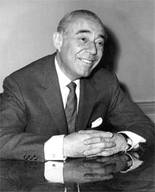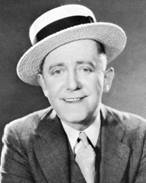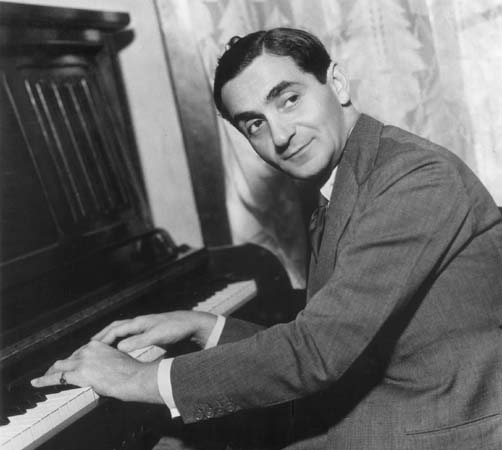THE HISTORY OF AMERICAN MUSICAL THEATER

Overview
In this unit, we will look at the American musical. We will
compare and contrast it to other styles of musical presentation. We will
also look at some of the most famous composers and how they developed the musical
which contributed to twentieth-century popular culture.
Musical
Theater
Along with jazz and rock, the musical is one of the most
important American contributions to twentieth-century popular culture. A musical,
or musical comedy, is a type of theater that fuses script, acting, and
spoken dialogue with music, singing, and dancing and with scenery and
costumes. Most musicals are comedies or love stories, though some are
serious. Many have been produced in theaters around Broadway in
A musical is usually performed in two acts, the second being shorter than the first. Melodies from the first half are often brought back during the second act in short, small segments. Traditionally the songs contained an introductory section (the verse) and a main section (the chorus) in A A B A form, which usually consists of 32 bars.
Many styles make up American musicals and separate it from opera. In
contrast to opera, musicals use simpler harmonies, melodies, and
structures. It also has more spoken dialogue than opera. The pitch
range required of musical performers is narrower than that of opera performers.
Also of great difference is that musicals are often written as a collaborative
effort: one composer writes the songs, other musicians are responsible
for writing the orchestrations, the overture, and other connective musical
passages, and the lyric books are often written by yet another person or group
of people. Two famous teams of composers and lyricists include Richard
Rodgers and Oscar Hammerstein and W.S. Gilbert and Arthur Sullivan.
Richard Rodgers and Oscar
Hammerstein II
|
|
George M. Cohan (1878-1942) |
|
Irving Berlin (1888-1989) |
|
Broadway
1900-1918
From 1900-1918, Broadway was starting to develop as a cultural center in
1920s
There were seventy to eighty theaters during this time and Broadway was
booming. Productions increased from 126 in 1917 to 264 in 1928 which is
still the
1930s
The depression had a great impact on Broadway Theater and caused the number of productions to decline in dramatic fashion. This decline also resulted in job loss for many employees of the theater, not just the performers. However, this was actually a very creative time due to the dramatic emotions caused by the depression and inspired in many creative works. Broadway also started to take on the political influences of the time.
1940s
During the 1940s, Broadway lost some of its originality and drive. New writers were hard to find, and Broadway Theater began to face competition from television and movies. Some theaters were forced to close causing Broadway to no longer be dominated by theater. Many theaters became film houses and as a result theater became less of an industry. It did still retain its liveliness and happiness just not on such a grand scale.
1950-present
After 1950, the theater business continued to decline. In 1969-70
there were only 62 productions and there were only 36 playhouses left.
However, Broadway was still attracting audiences from all over the world.
Politics of the time still were affecting Broadway and American people were
becoming less optimistic about life in general. The assassinations of
John F. Kennedy and Martin Luther King, the
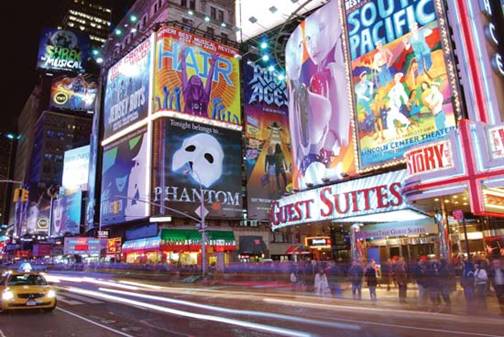
Pictured above: Billboards of
Broadway musicals from
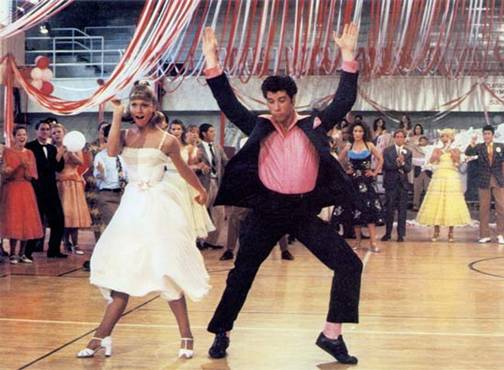
Pictured above: Olivia
Newton-John and John Travolta in Grease (1978), directed by Randal Kleiser
 |
| Unit 13 The History of American Musical Worksheet |
| Unit 13 Cornell Notes Worksheet |
